Marketing Automation Report 2023
Marketing Automation has come of age. Together with ZHAW and a competent research team, we have developed the Marketing Automation Report 2023. In this video contribution, we share the experiences from science and practice. The study shows that 75% of the companies surveyed consider Marketing Automation relevant, and it is now, as of this year, the fourth most important marketing technology after CRM, email marketing and search engine marketing.
Companies benefit from marketing automation by saving time on repetitive tasks and efficiently generating leads, which ultimately leads to more conversions.
However, despite these advances, challenges remain, such as a lack of resources or undefined processes for systematically nurturing leads and customers. Learning to run with this is not easy, but it predominantly requires one criterion for success: the well-thought-out plan. You can find the latest Marketing Automation Report and all handouts, summaries here.
Webinar Recording
Because of the importance of having a plan, we developed the Marketing Automation Maturity Index (MAMI) - a benchmark tool that helps companies analyze, create, and implement marketing automation strategies.
You can get the Marketing Automation Report 2023 by signing up for the Ondemand webinar or via this landing page: the report as a PDF, handouts and summaries, all compactly packaged available on this page.
MAMI is the compass for the best path to automated marketing. With this maturity model, we want to show that it requires a lot of attention in specific areas and that planning is an elementary component that should not be forgotten. MAMI originated from a master thesis at ZHAW by Alina Garbin and is continuously improved.
Our experts share their real-world experiences and challenges, as well as the benefits and use cases that work reliably. They are also happy to answer your questions, so take the chance to learn from these pros.
In this report, you'll learn more about the challenges of using marketing automation and how the MAMI can help identify where you stand against the benchmark in B2B. Let's figure out together how to effectively deploy Marketing Automation and take our businesses to the next level.
The Challenges
The biggest obstacles to implementing marketing automation in the enterprise (n = 251)
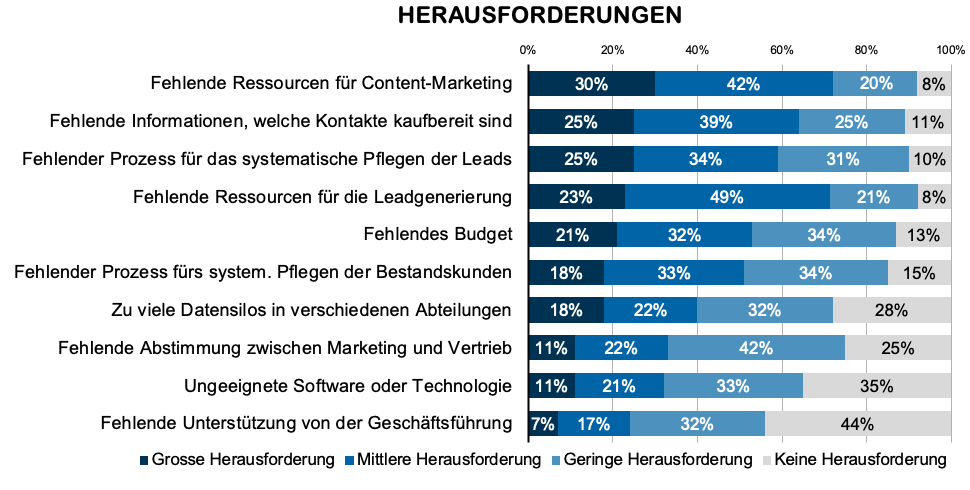
-
A lack of resources for content marketing: 72% of companies see this as a medium to big challenge, especially for small companies that struggle to create good content and distribute it across multiple channels.
-
Missing info on ready-to-buy leads: 64% of companies have trouble figuring out which leads are ready to buy. This makes it difficult to decide whether they are cold or hot leads.
-
- Missing information on ready-to-buy leads.
-
Missing processes for systematic lead nurturing: For nearly one in four companies, missing or suboptimal lead nurturing is a major challenge.
-
Failing resources for lead generation and nurturing: 72% of companies struggle to allocate sufficient resources for customer acquisition.
-
Missing budget: For one in two companies, a lack of budget is a major or medium challenge, predominantly among SMBs that need both human and financial resources to drive marketing and sales automation.
Benefits and Technologies
In short, marketing automation is super important and is becoming increasingly important to staying competitive and marketing effectively.
- Marketing is becoming more technological and sophisticated, with over 10,000 tools to choose from!
- CRM, email marketing, and search engine marketing are foundational technologies that every business should have.
- Marketing automation is becoming increasingly important: in just two years, the percentage of companies that say it's very relevant has increased from 18% to 42%.
- Why? Companies can save time and increase efficiency by automating repetitive tasks and using personalized communications.
- Marketing automation helps generate more leads (and higher quality leads), which is especially relevant in B2B.
- Personalized communication improves the relevance of content to customers and promotes customer loyalty.
- Marketing automation can also reduce costs and use the marketing budget more effectively.
The study shows that 75% of companies surveyed consider marketing automation relevant, and it is now, as of this year, the fourth most important marketing technology after CRM, email marketing and search engine marketing:
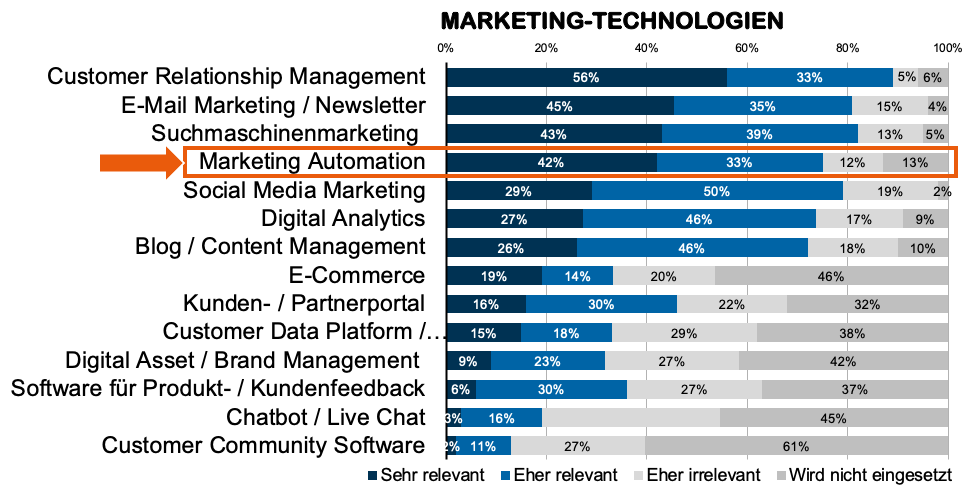
How relevant is marketing automation compared to other marketing technologies (n = 290)
Relevance increased dramatically over the past three years
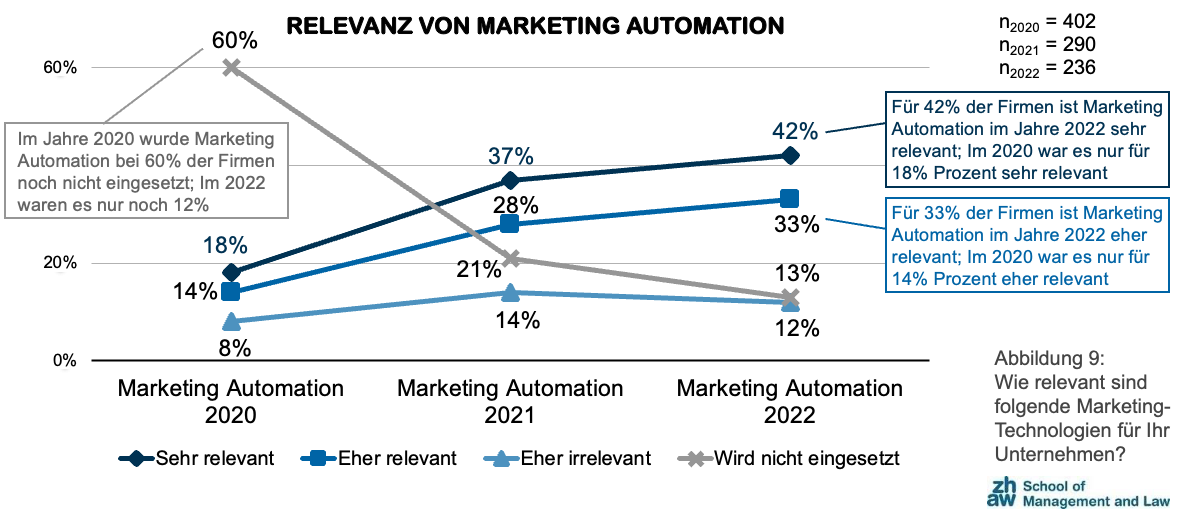
How relevant is marketing automation to businesses
Marketing Automation Maturity Index (MAMI)
The benchmark for marketing automation
- MAMI helps you measure your maturity level in Marketing Automation
- There are six dimensions: Strategy, Content, Organization, Processes, Data and Use Cases.
- Without a clear strategy and management support, it will be difficult to successfully implement Marketing Automation.
- Content marketing is important: you need to provide informative content and distribute it efficiently across multiple channels.
- Organization: marketing and sales should work together, responsibilities must be clear, and interdisciplinary collaboration is critical.
- Processes: Make sure you have a handle on your processes before you start marketing automation.
- Data: Data needs to be available and you should be able to use it for detailed analytics.
- Use Cases: There are many exciting opportunities here, such as social media content distribution, welcome email sequences, lead nurturing, or trigger-based emails.
The dimensions of the maturity model
As part of this study, a maturity model for automation was developed, the Marketing Automation Maturity Index (MAMI). It consists of the six dimensions strategy, content, organization, processes, data and automation (use cases). For this, 40 questions were asked about automation maturity.
Strategy
In the dimension of strategy, it was found that two-thirds of the companies have a clear differentiator and clearly defined the target group compared to the competition. For them, marketing automation has a high priority in the growth strategy and the strategic goals are continuously measured by key performance indicators (KPIs).
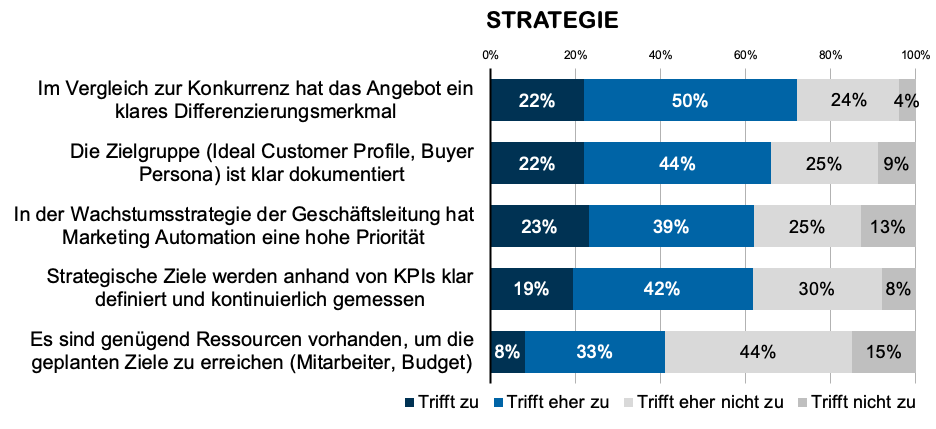
Strategic direction and planning of the company
Content
On the content dimension, most companies have plenty of informative content (articles, images, and product videos) available. At two-thirds of the companies, the content is created centrally as well as efficiently prepared for different channels, distributed and reused in marketing.
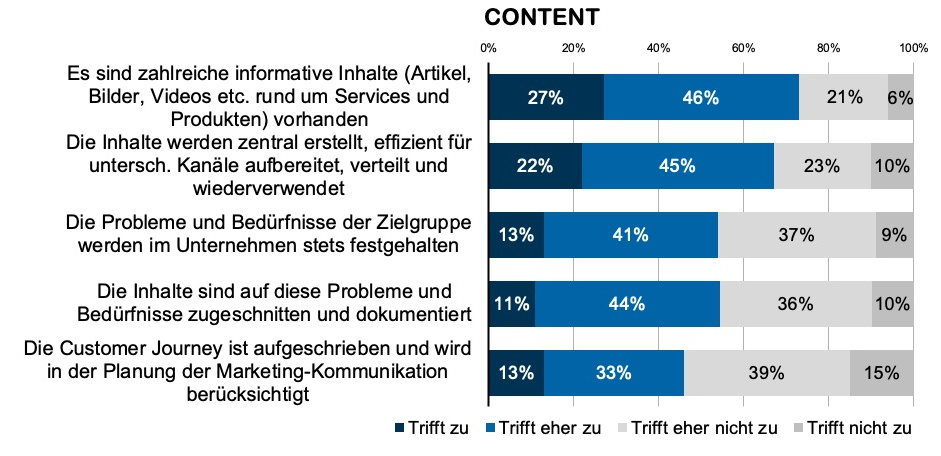
Content marketing and product information
Organization
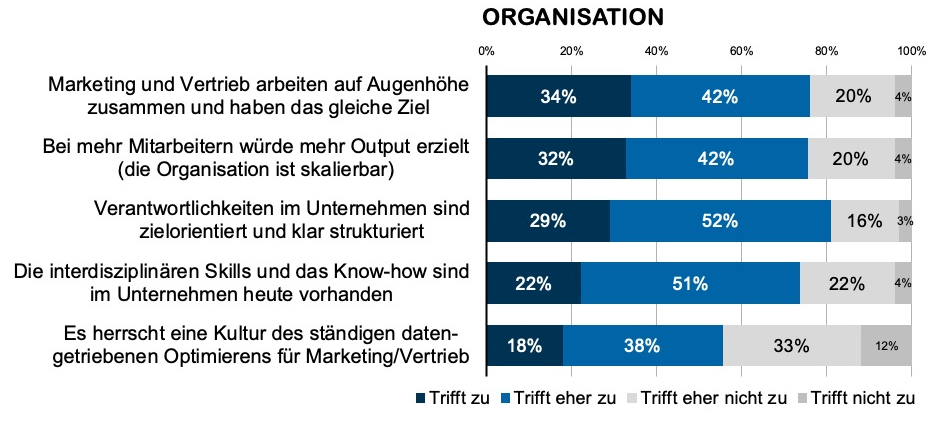
Scalability and organizational structure
Processes
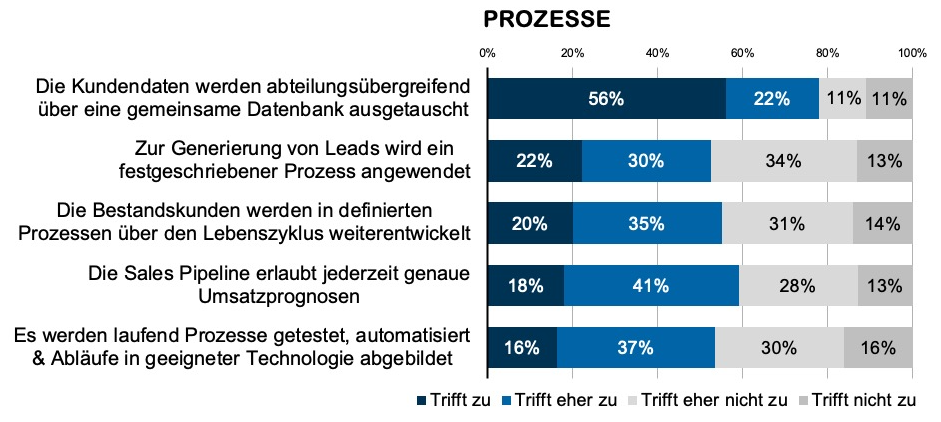
Processes of Marketing Automation
Data
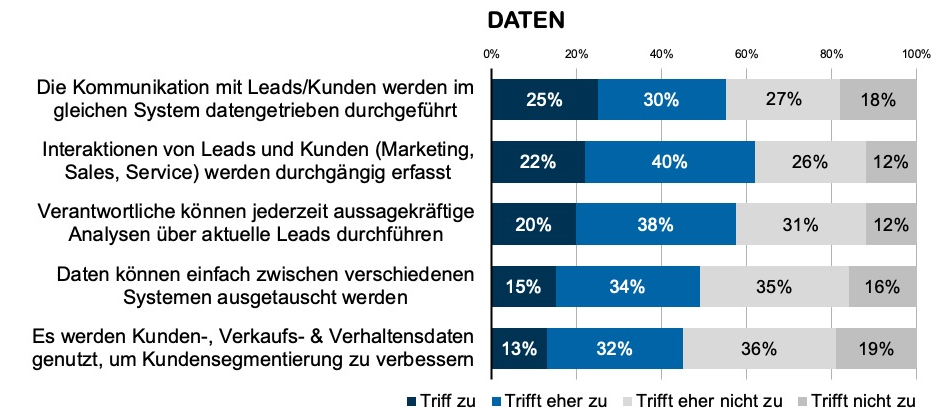
Data-Driven Marketing and Technologies
Use Cases
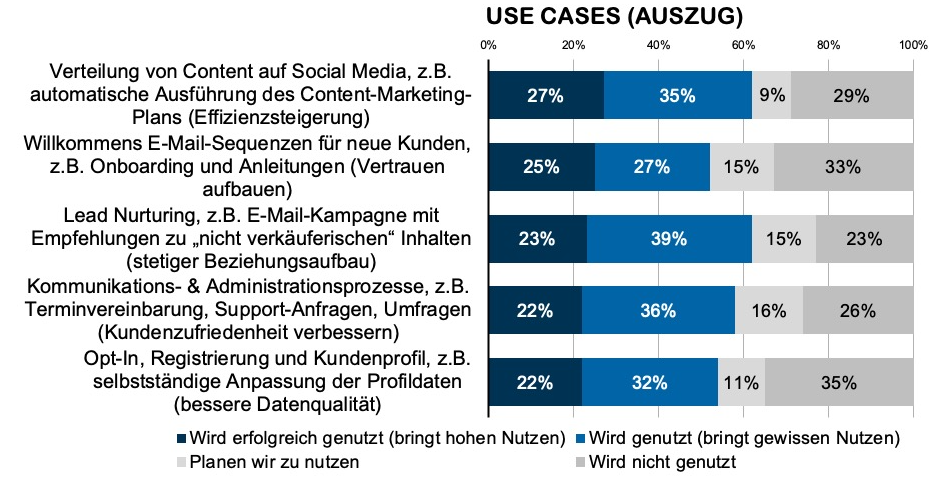
Common Use Cases for Marketing Automation
Surprisingly, half of companies do not capture the problems and needs of their target audience and tailor content to them. At four out of five companies, marketing and sales work together as equals and responsibilities are clearly Customer data is shared across departments via a common (CRM) database. Surprisingly, half have not yet defined standardized processes in lead generation and existing customer care (making digitization and automation more difficult). After all, two-thirds of the companies consistently record interactions with leads and existing customers in marketing, sales and services.
Comments